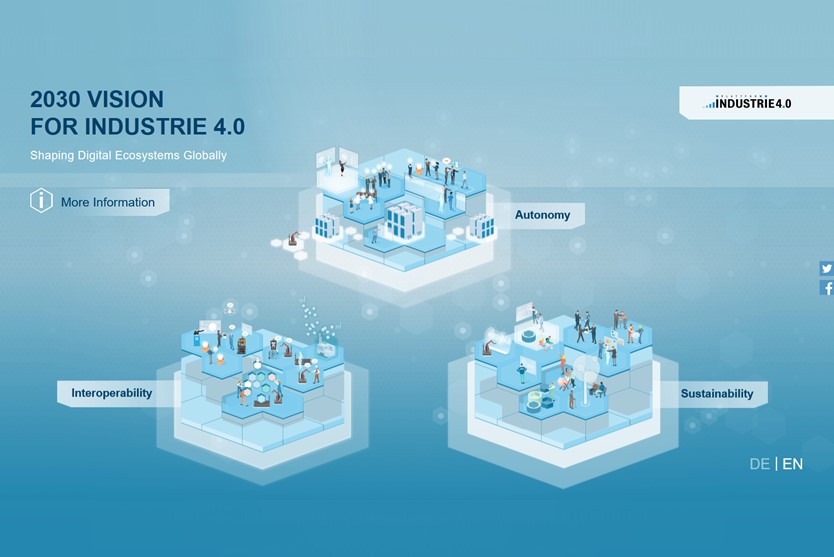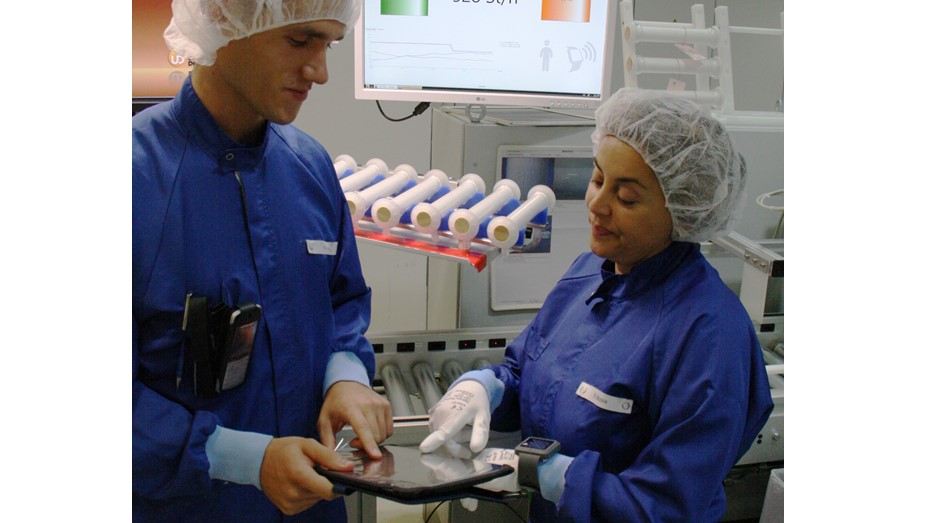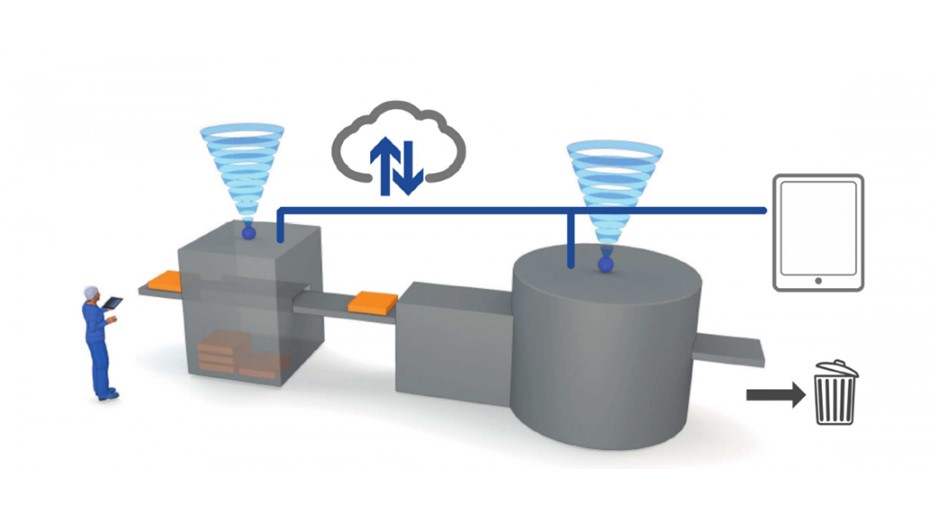What were the challenges to be solved and what specific benefits were achieved?
When using conventional technology, it is not possible to adapt machine cycle times to the variations in the value stream. Material and capacity losses would follow. Thanks to Industry 4.0 solution at hand the process is more efficient and resource friendly.
This Industry 4.0 application enables a variable cycle time, optimized for the material flow. This enables the reduction of inventory, material loss, energy waste and machine deterioration. The smart watch application optimizes the worker's efficiency.
Highlight
"We reduced our inventory, machine deterioration, conversion loss and we improved our uptime."
(Till Goldammer, Program Manager Smart Company 4.0)
How can the Industrie 4.0 approach be described?
The potting machine for dialyzers (artificial kidneys) was brought to an Industry 4.0 standard. The potting process is based on a two-component system that must be applied within a defined time limit. In case of exceeding the limit, the material must be scrapped. The aim of the improvement is to time the production in anticipation to the expected material flow. This is achieved by an algorithm which calculates the required capacity and optimal cycle time automatically. When operator support is needed, operators are notified via smartwatch. The operators have the option to accept or reassign the call or to put the machine in standby-mode. If the call is not answered within a given time the machine automatically goes into standby-mode.
What could be achieved?
By applying this solution, we have the following benefits:
- Optimized balanced throughput reduces back-up caused by bottlenecks in the production process.
- The machine availability is increased through the use of the smartwatch app, which allows the machine to contact the operator directly.
- The automatically calculated optimal cycle time reduces material waste.
- Less wear and tear on the machine due to a smoother, more stable process.
What measures have been taken to achieve the solution?
The concept is based on the technology of AI and human-machine communication
- AI: By pre-programming the machine variable and optimized cycle times can be used. Data from the up- and downstream equipment is analyzed by an algorithm to realize an optimized material flow. The prescribed optimal machine cycle time is set by the MES
- Human-machine communication: An algorithm calculates the acuteness of the need for an operator and notifies them via smartwatch. The operator accepts or reassigns the call or adjusts machine settings.
This was first tested on one manufacturing line and can be applied on other automated assembly lines.
The realization of this project was in close collaboration with BÄR Automation GmbH and GADV mbH.
What can others learn from it?
The existing IT infrastructure at Gambro Dialysatoren GmbH was successfully brought to the Industry 4.0 standard. Baxter in Hechingen is now in the position to replicate this process. Every project should strategically contribute to the digital transformation to a smart factory. Cooperation with external network partners was key for the success of the project.






